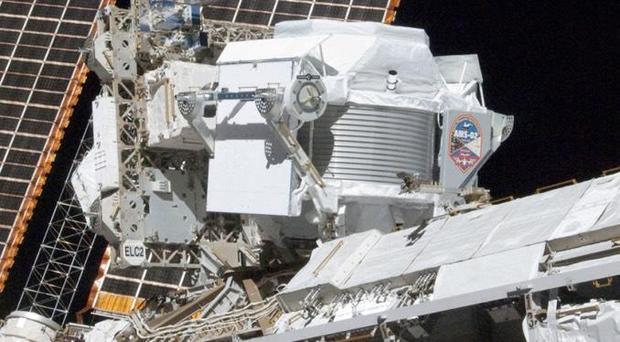Spacewalk to fix $2 billion cosmic ray detector
Installing new coolant pumps in a $2 billion cosmic ray detector aboard the International Space Station has required three complex spacewalks — a job rivaling the epic work to repair the Hubble Space Telescope. A fourth excursion Saturday aims to finish the task and verify that spliced coolant lines are leak-free, clearing the way for physicists to resume their research.
Astronauts Drew Morgan and Italian crewmate Luca Parmitano, the spacewalking surgeons who carried out a tricky coolant pump transplant last December, planned to begin their fourth joint spacewalk around 6:50 a.m. EST, switching their spacesuits to battery power while still inside the station’s Quest airlock.
For identification, Morgan, call sign EV-1, was assigned a suit with red stripes around the legs and helmet camera No. 20. Parmitano, EV-2, will be wearing an unmarked suit and using helmetcam No. 18.
Trending News
Jessica Meir and Christina Koch, veterans of three recent all-female spacewalks, will operate the station’s robot arm as required from inside the lab.
Once outside, Morgan and Parmitano will make their way to the boxy, 7.5-ton Alpha Magnetic Spectrometer, mounted on the top side of the station’s power truss just inboard of the lab’s right-side solar arrays.
Launched to the station in 2011 aboard the shuttle Endeavour, the AMS was built by an international team of researchers under the leadership of Nobel Laureate Sam Ting. Using a powerful electromagnet, the instrument is designed to deflect electrically charged high-energy cosmic rays into an array of sensitive detectors.
The goal of the research is to learn what happened to the antimatter presumably created during the big bang in equal measure with normal matter; to shed light on the nature of the unseen dark matter making up nearly a quarter of the known universe; and to learn more about the mysterious “dark energy” that appears to be speeding up the expansion of the cosmos.
Originally designed to operate for just three years, the AMS chalked up eight years of operation before being sidelined by the sequential failures of four carbon dioxide coolant pumps. The coolant system is what allows the AMS detectors to achieve the required levels of sensitivity.
To repair the system and extend the instrument’s life through the end of the station program, engineers developed a four-spacewalk plan to install a custom-built 350-pound module containing four pumps and a reservoir of fresh carbon dioxide coolant.
The AMS was not designed to be serviced in space, making the work particularly challenging But during spacewalks last Nov. 15, 22 and Dec. 2, Morgan and Parmitano opened up the AMS, removed insulation, snipped eight coolant lines, installed the new pump module and spliced, or “swaged,” the coolant lines back into place.
During Saturday’s spacewalk, the astronauts planned to stand by while engineers pressurized the coolant lines. Connectors where the lines were spliced into position were designed to pop open slightly if the internal pressure indicates a leak. If any leaks are detected, Morgan and Parmitano will attempt repairs before pressing on.
After verifying all eight coolant lines are leak free, the astronauts planned to re-install thermal insulation that was removed during the earlier spacewalks and install a new insulating tent-like blanket to replace an access panel that was removed and jettisoned during the first spacewalk.
With the spacewalk complete, AMS controllers at CERN, the European Organization for Nuclear Research, planned to send commands Sunday to re-charge the coolant loop with carbon dioxide and then power up and test the pumps Monday and Tuesday. If all goes well, science operations could resume as early as Wednesday.






Leave a Reply